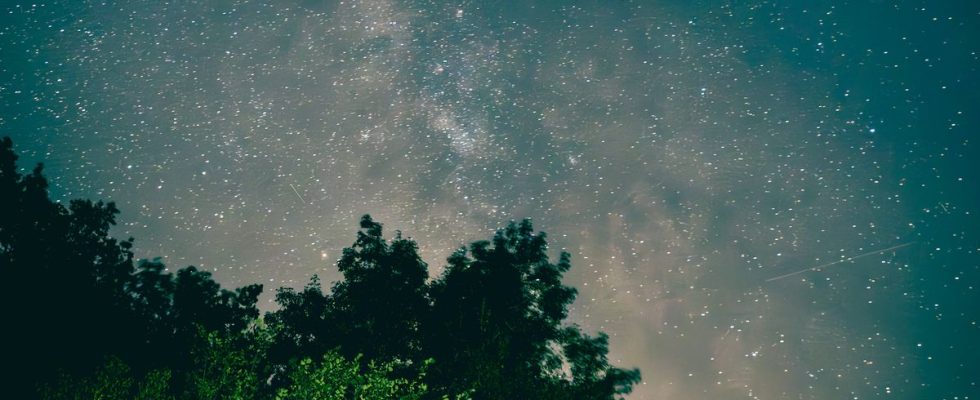They are as young as the stars are ancestral. The international dark sky reserves (Rice) were born in Canada in 2007 and were initially a matter for specialists. “They were created because astronomers no longer had access to the stars to do their work. They were the first victims of the increase in light pollution,” explains Nicolas Bourgeois, deputy director of the Pic du Midi. This Pyrenean site, with its famous scientific observatory, has joined the very closed circle of rice in 2013. Three new French reserves emerged in the decade that followed: Les Rice des Cévennes, Alpes-Azur-Mercantour and des Millevaches.
On site, mayors and communities are joining forces to reduce artificial lighting to a minimum and “preserve the nocturnal environment”. For four good reasons that 20 Minutes details.
Preserving our visual access to the stars
“Access to the stars is essential for our humanity. We question ourselves through the stars and we base our daily lives on the sky: the calendar, the weather, the exploration,” insists Nicolas Bourgeois. “We need contact with nature and the starry sky allows us to reconnect with it,” continues Héloïse Deutsch, project manager at the Pyrenees National Park. According to these two specialists, more than a third of the world’s population no longer has access to the Milky Way and it is Western countries that are most deprived of it. “It’s a free heritage and open to all, it’s important to reclaim the night,” adds the former geography researcher.
Fortunately, what is threatened is access to the stars, by the stars themselves. “It is one of the last pieces of the environment that man cannot destroy,” notes the deputy director of Pic du Midi. Thanks to this starry sky reserve; Tourists can now take advantage of a completely clear sky to observe the immensity of the sky – weather permitting – and astronomers can continue their work without incident.
Protecting nocturnal biodiversity
According to Héloïse Deutsch, two thirds of invertebrates need night time for their life cycle. Strong lighting also has an impact on migratory birds which are disoriented. “When you have a street lamp, insects are attracted to the light, circle around it and get tired. We have 150 insects that die every night per streetlight,” adds the referent.
Martens and even hedgehogs, active at night, are also affected. “A lit road is an insurmountable barrier for them,” specifies the project manager. The night is indeed a natural habitat for many species. Wanting to be reassuring, the two experts insist that biodiversity returns immediately when we work on lighting. Collaborative work in Rice allows the development of protection tools with, for example, the creation of ecological corridors and special lighting to reduce the impact of artificial light on nocturnal habitats and species. “We find fewer and fewer dead animals around streetlights since we pay attention to our lighting,” underlines Jean-Bertrand Dubarry, the mayor of Aulon, one of the 250 municipalities involved in the 600 km2 territory of the Pic du Midi reserve.
Reducing light pollution on our health
Absent from debates until a few years ago, light pollution has become a social issue. “We are made to live the day. These insights have an impact on us. We need darkness for our biological cycle,” points out Héloïse Deutsch. “We have artificialized the night.” Light pollution has, according to specialists, harmful effects on health with impaired sleep, delayed falling asleep, problems with memory, mood, attention, cardiovascular risks, an increase in risks of breast and prostate cancer, diabetes or obesity.
“Today, in our village, we can sleep with the windows open, breathe the fresh air without being affected by the light,” says Mr.
Improve the energy bill
Thanks to better lighting, directed towards useful areas, especially downwards, lighting becomes more efficient without “polluting” biodiversity. What’s more, all light towards the sky is reduced by 90%. And this is not to displease the wallets of elected officials. “Since 2011, we have been committed to reducing our light pollution with local stakeholders. We converted our lighting into a cosmowhite lamp. We reduced our light impact by 80% thanks to directional lighting. With all the current sobriety issues, we were able to reduce our energy bill by 90%,” enthuses Jean-Bertrand Dubarry. At first, the 93 residents of his mountain village gritted their teeth. “They said the witches were going to come back,” says the councilor. But “it’s back to normal.” They now even have a real night trail to enjoy the starry sky.
For the moment, these nature reserves are only the result of an initiative between municipalities, national parks and energy unions. They are also recognized by only one label, American, the International Dark Sky Association. Their wish through the first Congress of Dark Sky Reserves this week at the Pic du Midi is to be better considered by the French and European public authorities, to better work on the issue of light pollution.

